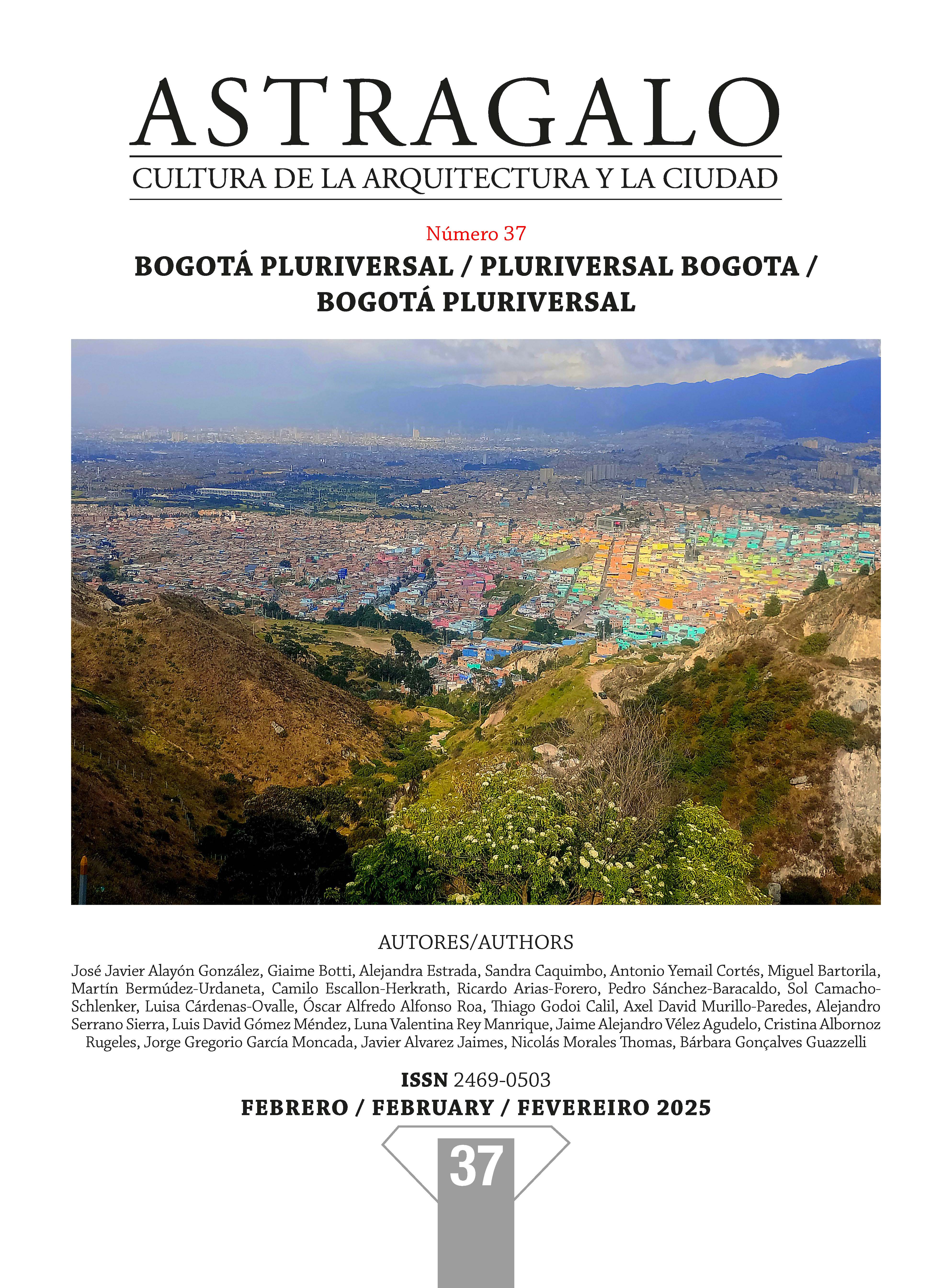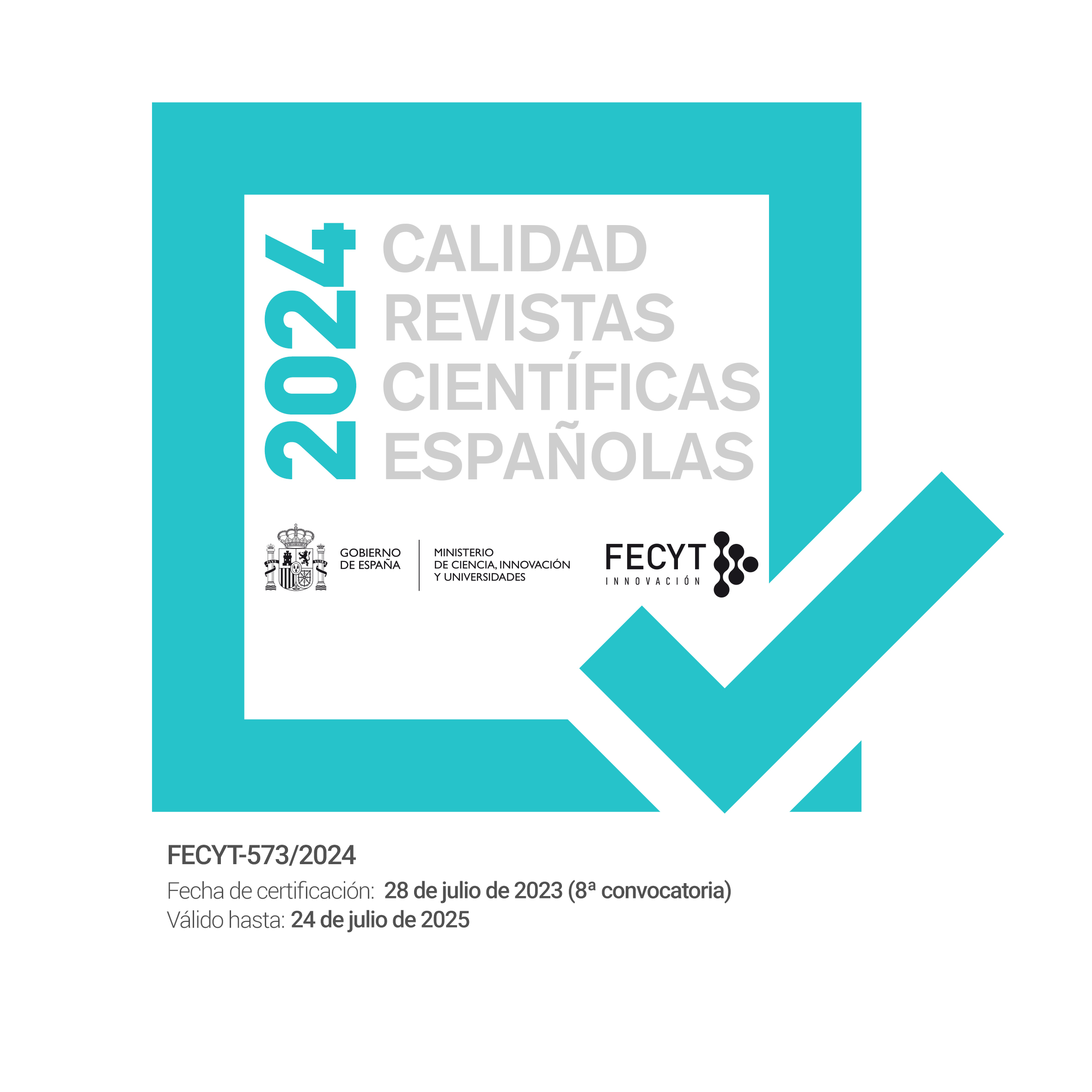Una mirada a la Bogotá pluriversal a través del grafiti y el arte urbano
DOI:
https://doi.org/10.12795/astragalo.2025.i37.09Palabras clave:
Bogotá, grafiti, destrucción de espacio, modernidad, colonialismoResumen
Este ensayo examina la transformación de Bogotá, partiendo de la “Atenas sudamericana” del siglo XX a un espacio contemporáneo de resistencia urbana, donde el grafiti y el arte urbano redefinen la identidad de la ciudad, situándose, particularmente, en el estallido social de 2021. En contraste con la imagen de una metrópolis civilizada inspirada en ideales griegos, Bogotá emerge como una contracara a través del arte urbano, encarnando una paradoja moderna: producir a partir de la destrucción. En este contexto, el grafiti actúa como una acción política que permite imaginar una Bogotá pluriversal mediante la inversión de la lógica excluyente de la urbanización capitalista. A menudo criticado como vandalismo, el grafiti interviene en el orden urbano de Bogotá, exponiendo una lógica colonial latente que es tanto capitalista como negadora de la vida.
Partiendo del concepto de producción de espacio Henri Lefebvre, este análisis explora la destrucción simbólica del discurso colonial inscrito en monumentos, muros y paisajes urbanos de Bogotá. Estas intervenciones urbanas, que son a la vez una forma de producir espacio, crean un escenario colectivo que critica el orden histórico impuesto a la ciudad mientras imagina una nueva realidad espacial. A través de esta lente, el grafiti y el arte urbano revelan la ciudad real, al tiempo que proponen una ciudad posible, donde múltiples formas de habitar el espacio puedan coexistir. Desafiando las percepciones tradicionales del espacio público, el arte urbano y, particularmente, el grafiti en Bogotá no solo critica las fuerzas destructivas de la modernidad capitalista, sino que propone una posibilidad transformadora donde todas las formas de habitar urbano sean válidas y celebradas.
Descargas
Citas
Castro-Gómez, Santiago. 2005. "El capítulo faltante del imperio: Reorganización posmoderna de la colonialidad en el capitalismo post-fordista." Ensayo leído en el Simposio Internacional ¿Uno solo o varios mundos posibles?, Instituto de Estudios Sociales Contemporáneos (IESCO), Bogotá, 7–10 de junio.
Colprensa. 2021. “Por lo menos 103 personas tuvieron lesiones oculares en paro nacional de 2021.” Radio Nacional de Colombia, 26 de noviembre. Consultado el 4 de noviembre de 2024. https://www.radionacional.co/actualidad/lesiones-oculares-paro-nacional-103-casos-2021.
Cusicanqui, Silvia Rivera. 2015. Sociología de la imagen: Miradas ch'ixi desde la historia andina. Buenos Aires: Tinta Limón.
Escobar, Arturo. 1995. Encountering Development: The Making and Unmaking of the Third World. Princeton, NJ: Princeton University Press.
Espejo, Germán. 2021. "Escombros, desolación y destrucción: Bogotá el día después del vandalismo." RCN Radio, 29 de abril. https://www.rcnradio.com/bogota/escombros-desolacion-y-destruccion-bogota-el-dia-despues-del-vandalismo.
Foucault, Michel. 1984. “Des Espaces Autres.” Conferencia dictada en el Cercle des études architecturals, 14 de marzo de 1967. Publicada originalmente en Architecture, Mouvement, Continuité, no. 5: 46–49. Traducida al inglés por Jay Miscowiec, disponible en http://foucault.info/documents/heteroTopia/foucault.heteroTopia.en.html. Consultado el 29 de noviembre de 2024.
Gordillo, Gastón R. 2014. Rubble: The Afterlife of Destruction. Durham, NC: Duke University Press.
Harvey, David. 2008. París, capital de la modernidad. Madrid: Akal.
Jaramillo, Samuel. 2017. "¿Gentrificación en Bogotá? Repensando la noción de gentrificación en América Latina a partir del caso de Bogotá." Ponencia presentada en el Congreso Latinoamericano de Teoría Social: Horizontes y dilemas del pensamiento contemporáneo en el sur global, Mesa 40: La urbanización latinoamericana en el capitalismo actual.
Lefebvre, Henri. 1991. The Production of Space. Traducido por Donald Nicholson-Smith. Oxford: Blackwell Publishing.
Lynch, Kevin. 1990. "The Waste of Place." Places 6, no. 2 (15 de enero). Consultado el 29 de noviembre de 2024. https://escholarship.org/uc/item/1st419rj.
———. 2003. La revolución urbana. Traducido por R. Bononno. Minneapolis: University of Minnesota Press.
Nietzsche, Friedrich. 2005. El ocaso de los ídolos o cómo se filosofa a martillazos. Traducido por Andrés Sánchez Pascual. Madrid: Alianza Editorial.
Ortiz van Meerbeke, Gabriel, and Bjørn Sletto. 2019. “‘Graffiti Takes Its Own Space’: Negotiated Consent and the Positionings of Street Artists and Graffiti Writers in Bogotá, Colombia.” City 23 (3): 366–87. doi:10.1080/13604813.2019.1646030.
Puentes, Ana. 2021. "Grafiti y protesta social en Bogotá: Los muros que no callan en el paro." El Tiempo, 24 de agosto. Consultado el 29 de octubre de 2024. https://www.eltiempo.com/bogota/grafiti-y-arte-urbano-en-el-paro-nacional-en-bogota-612675.
Quijano, Aníbal. 2000. “Colonialidad del poder, eurocentrismo y América Latina.” En La colonialidad del saber: Eurocentrismo y ciencias sociales, editado por Edgardo Lander, 201–246. Buenos Aires: CLACSO.
———. 2020. “Lo público y lo privado.” En Cuestiones y horizontes: De la dependencia histórico-estructural a la colonialidad/descolonialidad del poder, 1a ed. especial, 785–86. Buenos Aires: CLACSO.
Schmid, Christian. 2008. “La teoría de la producción del espacio de Henri Lefebvre: Hacia una dialéctica tridimensional.” Traducido por Bandulasena Goonewardena. En Espacio, diferencia, vida cotidiana: Lecturas sobre Henri Lefebvre, editado por Kanishka Goonewardena, Stefan Kipfer, Richard Milgrom y Christian Schmid. Londres: Routledge.
SietePolas. “Bloqueos, grafitis y vidrios rotos… Lo que es y no es una protesta pacífica.” Feminismos y versiones de un mundo de contradicciones. Sin fecha de publicación. Consultado el 4 de noviembre de 2024. https://sietepolas.wordpress.com/2021/06/02/bloqueos-grafitis-y-vidrios-rotos-lo-que-es-y-no-es-una-protesta-pacifica/.
Wallerstein, Immanuel. 1974. The Modern World-System I: Capitalist Agriculture and the Origins of the European World-Economy in the Sixteenth Century. Berkeley: University of California Press.
Zambrano Pantoja, Fabio. 2002. "De la Atenas suramericana a la Bogotá moderna: La construcción de la cultura ciudadana en Bogotá." Revista de Estudios Sociales, no. 11 (febrero): Universidad de Los Andes, Bogotá, Colombia.
———. 2022. "Sobre el reequipamiento ontológico de las ciudades." Astrágalo. Cultura de la Arquitectura y de la Ciudad 30. https://dx.doi.org/10.12795/astragalo.2022.i30.02.
Descargas
Publicado
Cómo citar
Número
Sección
Licencia
Derechos de autor 2025 Javier Alvarez Jaimes

Esta obra está bajo una licencia internacional Creative Commons Atribución-NoComercial-CompartirIgual 4.0.


















